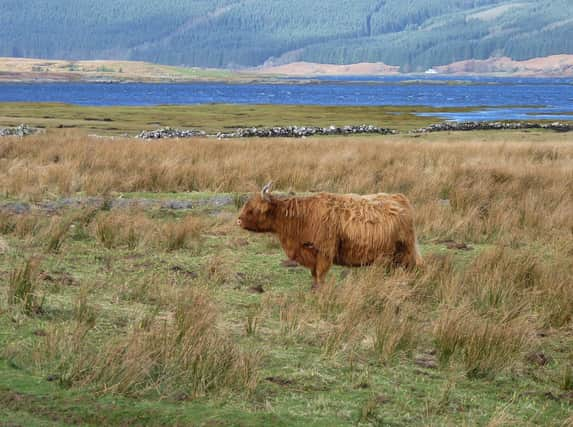Crofts hold key to nature biodiversity


Professor Davy McCracken, head of Integrated Land Management at Scotland’s Rural College, said that farms throughout Scotland should look at the environmental benefits provided by the hill and island regions and use it as a template for how the industry can improve its green credentials.
Prior to the election, a farmer-led group was advising the Scottish Government on how the industry can work towards becoming more carbon friendly, both by reducing inputs and increasing biodiversity.
Advertisement
Hide AdAdvertisement
Hide AdA State of Nature report in 2019 found that, since the 1970s, nearly half of the 352 species of birds, mammals and butterflies found in Scotland have seen a decline. While there are a variety of reasons for this, intensive agriculture has been a major contributory factor.
Professor McCraken heads the rural college’s hill research farm of Kirkton and Auchtertyre near Crianlarich. The 2,200-hectare expanse is mostly made up of rough hill ground and mountainous terrain, rising to 1,000-feet above sea level.
It is home to a 1,600-ewe flock and a herd of traditional type cattle and, while it works very much along the lines of a working hill farm, their objective is to research and demonstrate “more productive, efficient and profitable hill farming” – both in terms of assessing the potential of new equipment and techniques and suitable land management practices.
"In hill farming and crofting systems, the biodiversity imperative is primarily on retaining some form of grazing management on the hills and moorlands in order to maintain existing high-nature conservation value habitats and wildlife,” said Prof McCracken.
Advertisement
Hide AdAdvertisement
Hide AdHowever, he said in lowland systems the “focus needs to be on redressing the habitat simplification that has occurred through loss of habitats and inappropriate management”.
He explained that at the research farm they had undertaken a series of conservation measures over the years, such as tree planting and fencing off burns to encourage wildlife.
"We have shown it is possible to integrate biodiversity management successfully into a hill farm setting,” he said. "We just need more on farms across Scotland to help halt and redress the biodiversity crisis.”
A National Development Plan for Crofting was unveiled by the Scottish Government before the election which was designed “to ensure that crofting continues to play an integral role in rural and island life”.
Advertisement
Hide AdAdvertisement
Hide AdWhile some observers derided its lack of ambition and very general aims, it did highlight the important the role that crofting plays in protecting and enhancing biodiversity through low-input land management systems.
Unveiling the document, the then rural affairs minister Fergus Ewing said there was “now a need to realise the potential for croft land to address the climate change and biodiversity challenges”.
Scottish Crofting Federation chair Donald MacKinnon it was “a step in the right direction”.